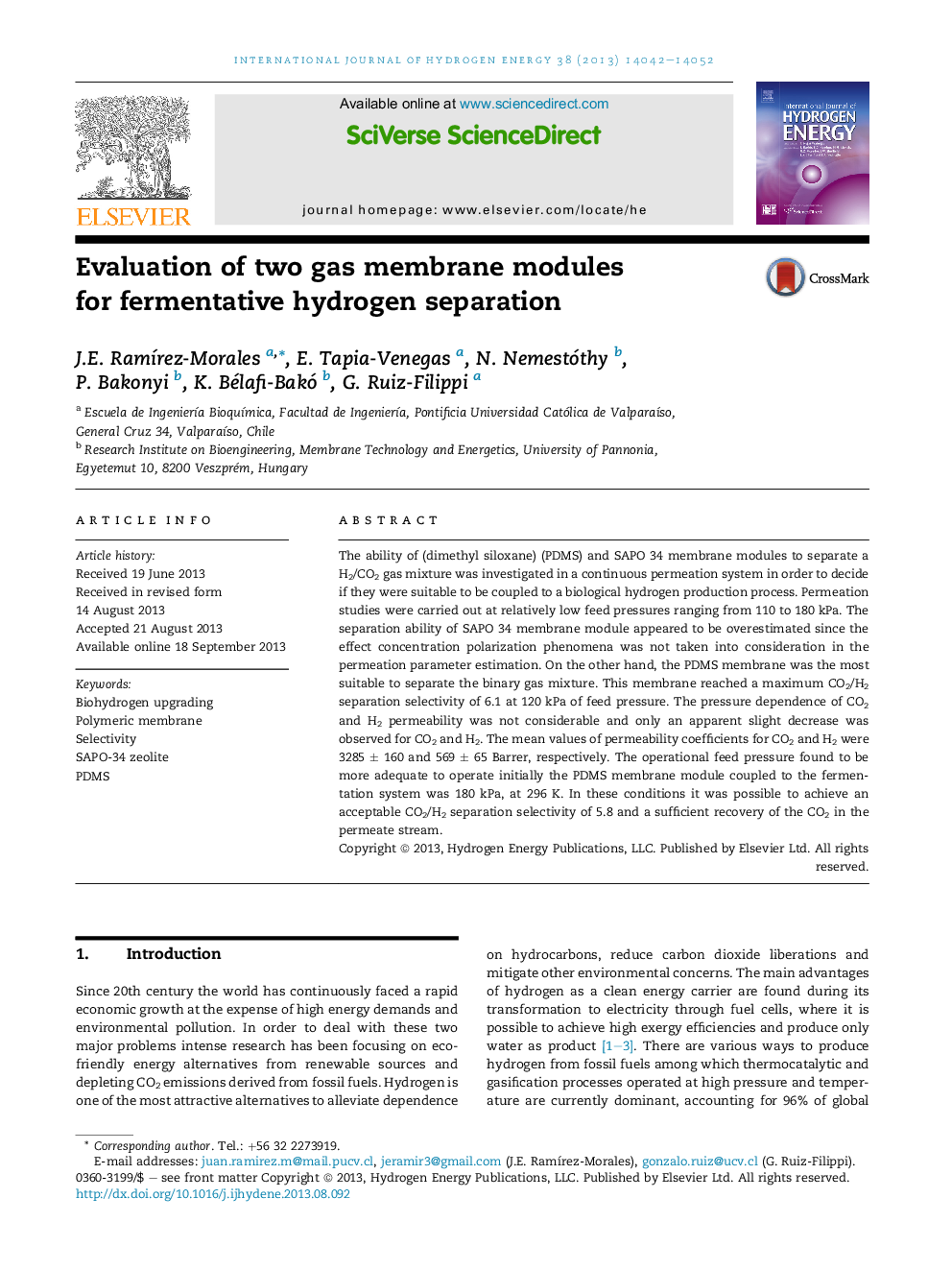| Article ID | Journal | Published Year | Pages | File Type |
|---|---|---|---|---|
| 1273074 | International Journal of Hydrogen Energy | 2013 | 11 Pages |
•A membrane technology to separate fermentative hydrogen is proposed.•PDMS membrane was suitable to separate a binary H2/CO2 gas mixture.•PDMS membrane can be coupled to a biological hydrogen production process.•Separation ability of SAPO 34 membrane module appear to be overestimated.
The ability of (dimethyl siloxane) (PDMS) and SAPO 34 membrane modules to separate a H2/CO2 gas mixture was investigated in a continuous permeation system in order to decide if they were suitable to be coupled to a biological hydrogen production process. Permeation studies were carried out at relatively low feed pressures ranging from 110 to 180 kPa. The separation ability of SAPO 34 membrane module appeared to be overestimated since the effect concentration polarization phenomena was not taken into consideration in the permeation parameter estimation. On the other hand, the PDMS membrane was the most suitable to separate the binary gas mixture. This membrane reached a maximum CO2/H2 separation selectivity of 6.1 at 120 kPa of feed pressure. The pressure dependence of CO2 and H2 permeability was not considerable and only an apparent slight decrease was observed for CO2 and H2. The mean values of permeability coefficients for CO2 and H2 were 3285 ± 160 and 569 ± 65 Barrer, respectively. The operational feed pressure found to be more adequate to operate initially the PDMS membrane module coupled to the fermentation system was 180 kPa, at 296 K. In these conditions it was possible to achieve an acceptable CO2/H2 separation selectivity of 5.8 and a sufficient recovery of the CO2 in the permeate stream.
